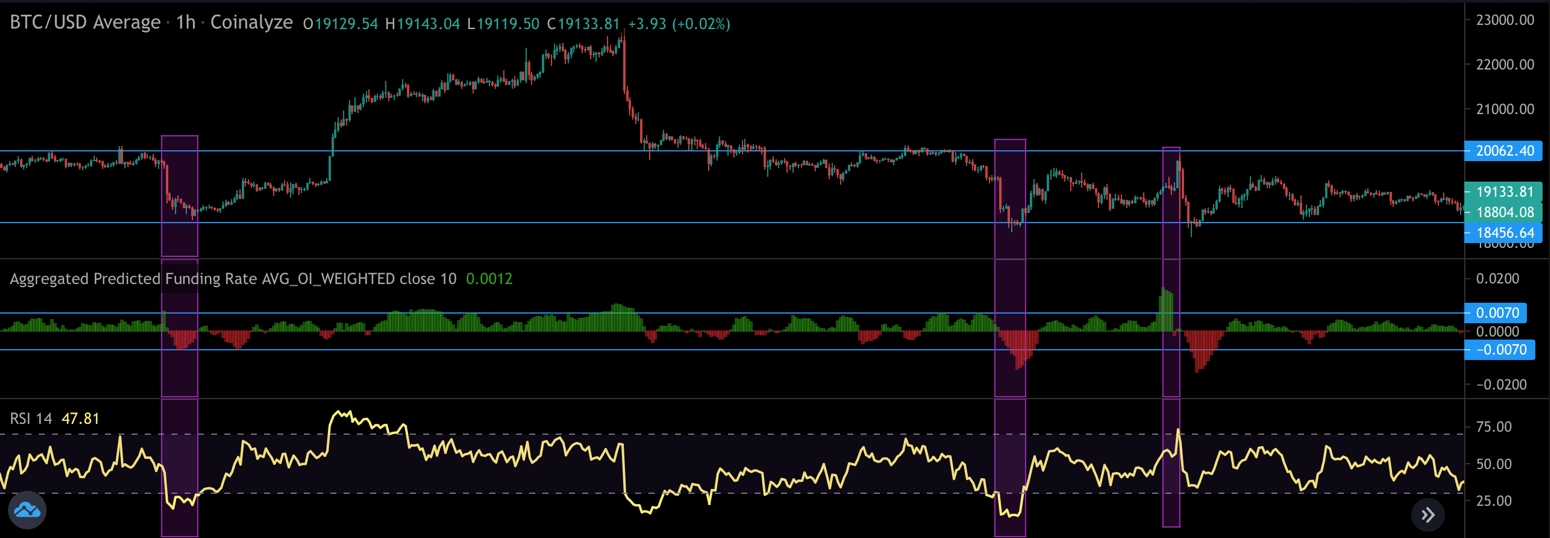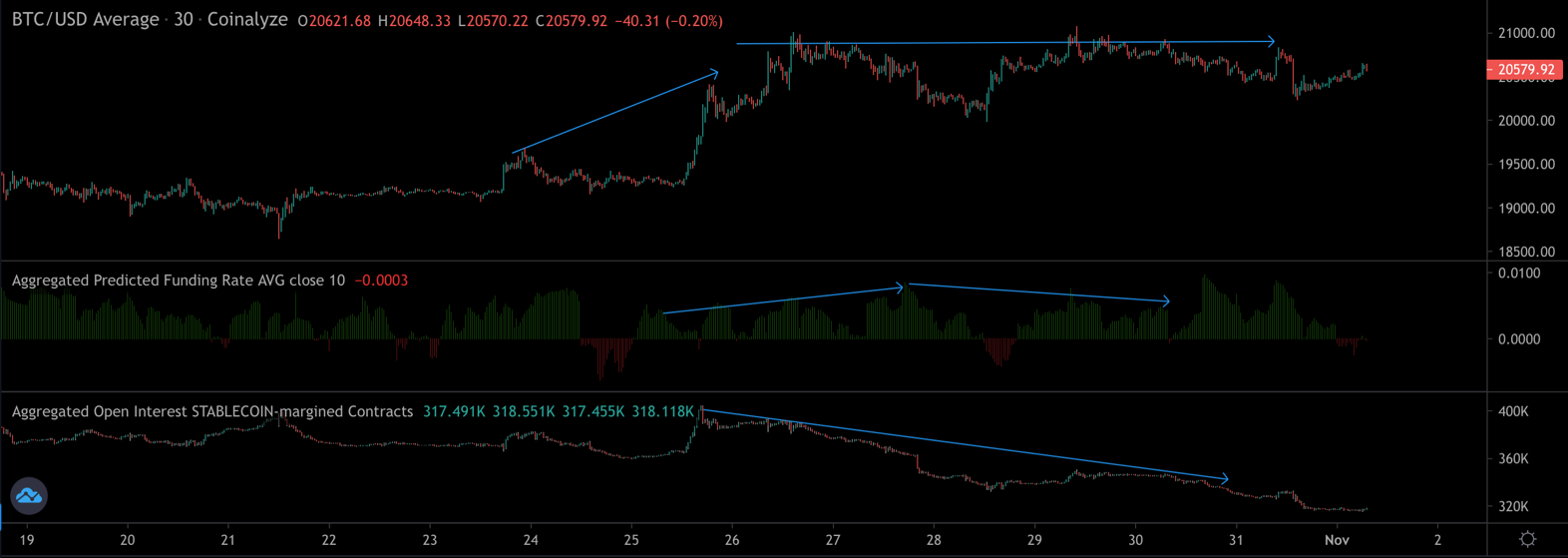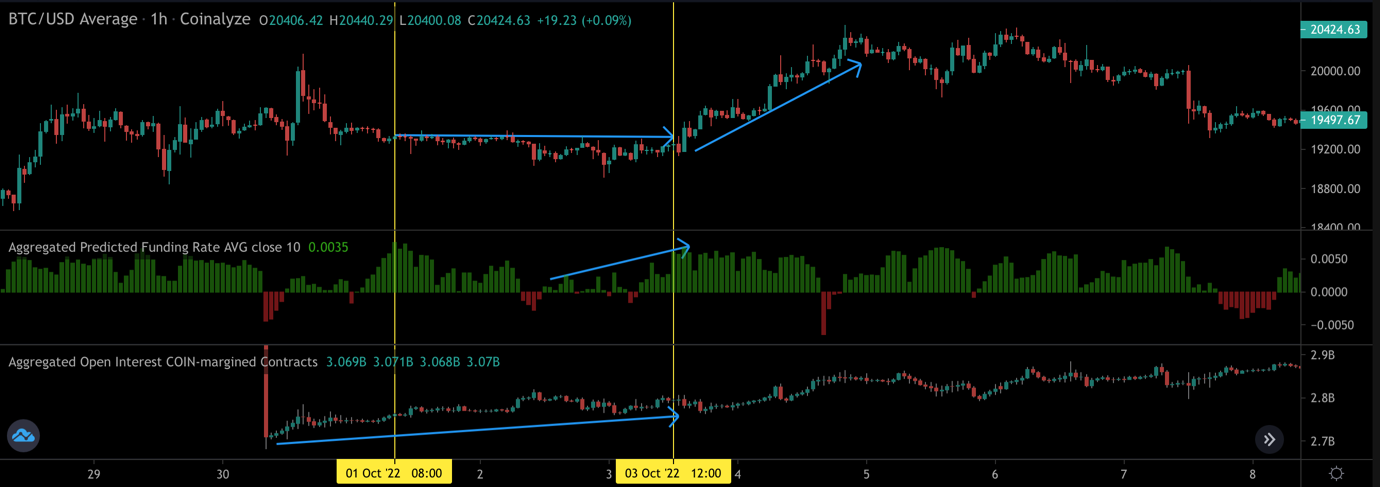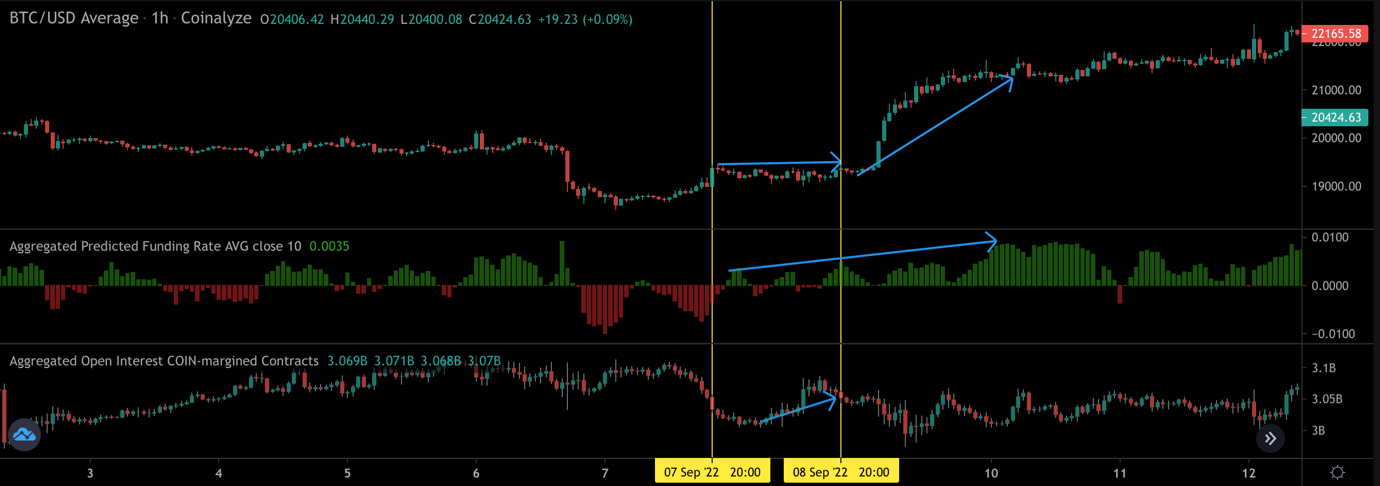What are predicted funding rates?
As mentioned in the previous article, funding rates are mechanisms to ensure that the price of a perp contract converges with its underlying spot price. Most exchanges show to features, the historical funding rates, the funding rate that was paid in previous intervals, and the predicted or real-time funding rate which is the expected funding rate in the next payment interval. The latter is more accurate at illustrating the changes in shorts and longs as the rate adjusts in real time, this is more reliable than looking at the “closing” funding rate. This may be helpful when event-based trades are being made which occur before the funding rate interval closes.
Different exchanges have different ways of calculating their predicted funding rates. For example, FTX uses the TWAP, time-weighted average price, of its index price and futures price, while Binance uses cash interest rates. However, exchanges will always take into consideration the real-time index premium, that is, the perp’s price over or under the underlying price. As the premium/discount increases or decreases, the predicted funding rate for the next interval changes.
How the predicted funding rate indicator works
Coinalyze makes use of this data from exchanges by creating the predicted funding rate indicator. Coinalyze retrieves the predicted funding rates from exchanges and stores the data for different time intervals so that users can use the indicator for whatever time frame on the price chart.
Similar to the aggregated funding rate indicator, take Bitcoin funding rate for example, the predicted funding rate indicator, PFR, can aggregate and average the data. What’s new is that the indicator now has a weighted average based on Open interest, OI. This is a huge game changer as it shows a better representation of the total size of these funding rates. Exchanges with larger open interest will have a larger weightage on the PFR indicator. How does this help? Well imagine an exchange with $100K in OI, and a funding rate of -0.1%, we’ll call this exchange A. Exchange B on the other hand has OI worth $500K and a funding rate of 0.05%. If we took the average funding rate, we would get -0.025%. This suggests to us that perps traders are bearish on the market. This isn’t true since there is a larger OI of $500K that is bullish. If we took the weighted average approach, we would get a funding rate of 0.025% which is more representative.
Trading strategies
The predicted funding rate can be implemented into many trading strategies. In our example, the PFR indicator can be used as a trend reversal indicator. As the PFR indicator tends to show positive funding, sudden red candles followed by positive funding again is common. We can use this as an indicator together with the MACD to capture strong reversals. If there is a brief red funding bar followed by positive funding again, and that move precedes a cross over in the MACD lines, it signals a good opportunity to take a position in the opposite direction.
How this can be interpreted is that some traders may be hedging, alternatively, some traders may be making short positions. The MACD indicator helps to confirm this trend reversal when the MACD lines cross.


Recently, the PFR indicator has been a good companion to the RSI when trading rangebound strategies. Looking at the columns, periods where there were spikes in funding rate below the -0.007 levels that coincided with oversold RSI levels presented good opportunities for buying, and vice versa.
Given Bitcoin’s sideways movement over the past few months, this indicator helps to corroborate with the RSI when markets are oversold and overbought.

Lastly, one way to have a better understanding of markets is using open interest (stablecoin-margined and coin-margined) and predicted funding rates. Firstly, when looking at stablecoin-margined OI, negative predicted funding rate accompanied by rising open interest tends to show that there is a large number of shorts piling in. This may precede large liquidation moves as seen in the picture.

Aside from that, the two indicators stablecoin margined open interest and PFR can help to determine whether it is too late to trade the trend. When a market has rallied, one might hope to enter a trade when price pulls back. To determine if it is too late to enter the trend, one can watch for a declining PFR together with falling open interest. This signals that the trend has lost strength and is less likely to rally again. Traders close their positions as indicated by a falling open interest. Some may even take short positions as indicated by the PFR if it turns negative signaling a possible reversal. As seen in the example, the falling PFR and open interest indicates that less traders are ape-ing into the trend. This is indicated by price action which stalls and moves sideways after a large rally.

Another open interest indicator that can be leveraged on is the open interest on coin-margined contracts. This is especially so for spotting long opportunities. Traders who are confident in the market will be confident to use their assets as collateral to leverage on futures contracts, so as to increase their returns. Traders looking for signals to long the market can use a combination of price, open interest on coin margined contracts and predicted funding rates. In these two scenarios, it can be seen that during periods of sideways movement, rising open interest followed by higher highs in PFR will precede a rally.


Overall, the PFR indicator is a great indicator to add to one’s toolbox when trading as it shows the real time change in funding rates which reveal how participants are trading on exchanges. Furthermore, with the addition to the weighted average open interest feature, traders can use the PFR indicator with more accuracy.
Disclaimer: This article is not investment advice. Note that cryptocurrencies are highly volatile assets and very risky investments. Do your research or consult an investment professional before investing. Never invest more than you can afford to lose. Never borrow money to invest in cryptocurrencies.